Imagine a journey back in time to the year 1497, let’s say. A tiny seed cone from a western red cedar flutters to earth deep in the North Shore Mountains, in what would later be known as Hydraulic Creek, in the Seymour River Valley. It comes quietly to rest on an outcropping of granite, and in this protected enclave, somehow takes root, beginning life as a tiny seedling.In a forest seldom seen by human eyes, but walked by deer, bears, mountain lions, and squirrels, the tree is never wanting for companionship. Not fifty yards downslope, a tall and sturdy Douglas Fir already into its second century, provides it shelter and shade.
Every year came the rains, and the time passed, ever slowly, and the seedling became a tree, growing vibrant and strong. The surrounding forest , as you’d expect, flourished equally well.
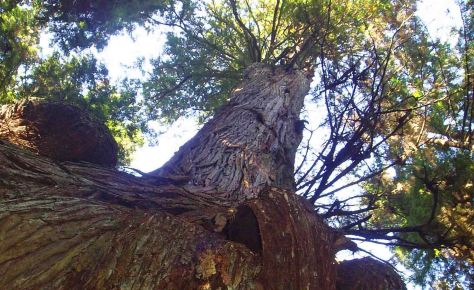

Seasons repeated as time moved on, determined only by the forces of nature until the turn of the twentieth century. That was when men arrived in the Seymour Valley, wanting cedar for the shingle bolts that would be used to build homes. Life for the ever growing cedar, now an aging veteran of the forest, would never be quite the same. In fact, its very survival became threatened.
Teams of loggers arrived in the forests, working their way up the valley, in search of the largest trees. Many giants fell to their crosscut saws, but somehow, that gnarled cedar atop the rock and its guardian Douglas fir survived. Some have speculated that it was saved because of a great fire that halted logging operations in the mid 1930s, or that they were the beneficiaries of a collapse in the timber market, caused by The Great Depression. In any event, good fortune spared them both.

Travel far forward once, to the 1980s and early 1990s. The forest was then under the administration of those charged with maintaining Greater Vancouver’s water supply. The area below the Seymour Dam had been designated an auxiliary watershed and had just been opened to recreational users. Though logging had been strictly banned in the watersheds prior to 1967, once again it reared its ugly head in the years that followed. There were extensive plans to cut down the valley’s remaining timber and, unbeknownst to the public, regular harvesting was taking place in both the Seymour and Capilano Watersheds. The area below the dam, now called the Lower Seymour Conservation Reserve, then bore the more ominous name Seymour Demonstration Forest. It was not clear at the time just how much of the forest would ultimately be saved, but the trees of Hydraulic Creek were clearly on the cutting block.
Enter Ralf Kelman, the son of a North Vancouver logger, who had grown up in the woods of the Seymour Valley. He had developed a love of the forest sometimes bordering on obsession, and had spent many a day hunting down the valley’s remaining stands of old growth trees. He wanted these giants saved, and so became involved with the Western Canada Wilderness Committee. Together with Paul George, Will Koop, Chris Player, and numerous others, he battled the Greater Vancouver Water District (GVWD) to end logging in Vancouver’s watersheds. The conflict raged on for years, and the powers that be were very reluctant to stop the practice. Finally, in 1994, logging was halted in the Seymour Demonstration Forest, but harvesting timber in Greater Vancouver’s watersheds was not officially banned until 2002. The WCWC’s actual conservation campaign was a real eye opener, and highlighted the deplorable manner in which the GVWD dealt with this contentious issue!

During that time of conflict, the WCWC had printed a map of the old growth tree groves of the Seymour Valley, and through my friend Vida, I was able to get a scanned copy of the map to work with. Eagerly, I set out to locate what Ralf had already uncovered. The very centrepiece of his finds was called the Temples of Time Grove of Giants, which was just south of Hydraulic Creek. Two particular trees, the Tolkien Giant and the Temple Giant, quickly captured my imagination!
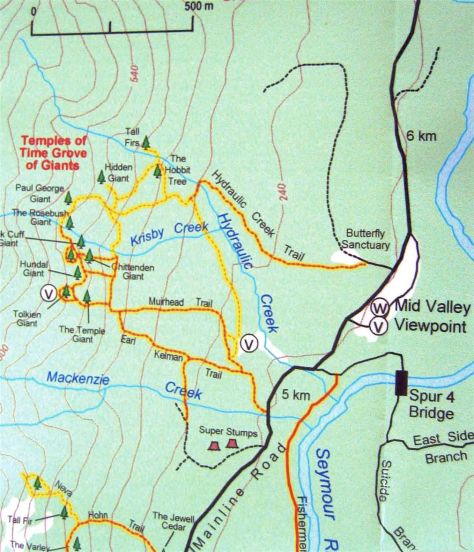
In the spring of 2006, Matt and I decided to visit once more, to find out whether or not they all survived. While I had visited them previously, in 2004, the plan that day was to try and visit each and every tree on the map. After a brisk bike ride to the Hydraulic Creek Bridge, we stashed our rides in the woods and began hiking. Matt, who at the time worked for the Seymour Hatchery near the Seymour Dam, was really looking forward to seeing the grove.
We began as I had several years before, by trekking steeply uphill to the Hidden Giant. It is a Douglas fir that spans about two metres in diameter, and could be five hundred years old. Should it remain permanently protected, it will certainly become one of the finest specimens in the valley!

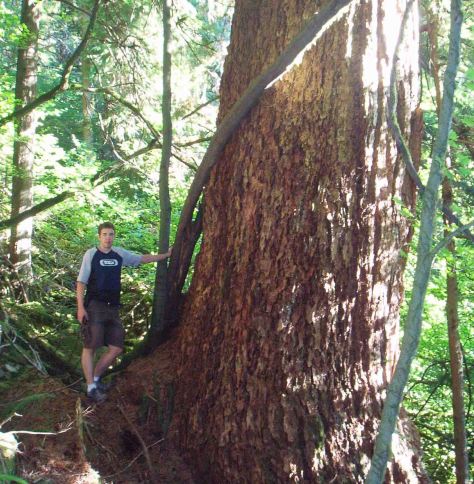
From there, we worked our way a little bit higher, as sunlight filtered through the forest canopy. We could easily imagine how Ralf must have felt when he found these trees. It was sobering to think that these trees might well have been cut down without a second thought. The balance between preservation and industry will always be a precarious one. Hopefully, compromises will be reached, and forests like these will survive for future generations to enjoy.
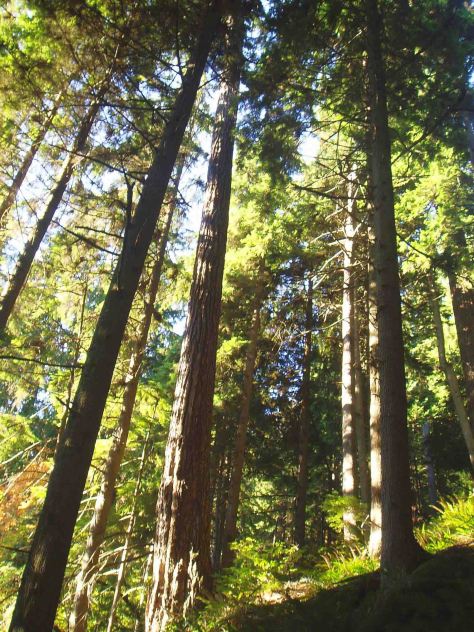
Our next stop was the Paul George Giant. Paul is well known for his environmental efforts, and also authored the book Big Trees, Not Big Stumps, which documents many of the efforts to preserve British Columbia’s forests. His namesake is an ancient fir which measures about 2.43 metres(8.00 feet) in diameter, and sits quietly, overlooking the rest of the grove.
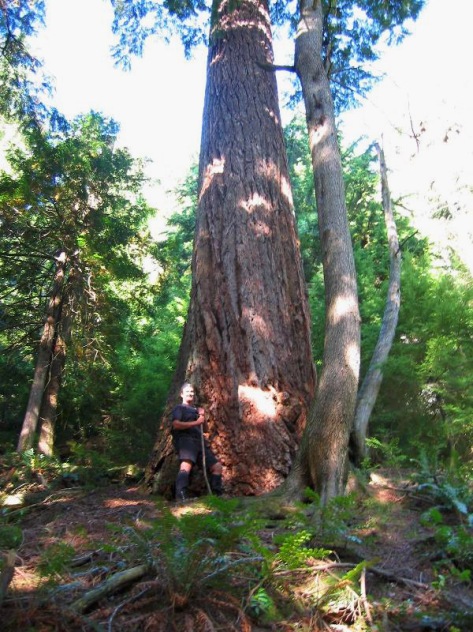
It has been nearly twenty five years since I was told that an official trail was to be cleared and marked through this grove, but that has still not happened. Should you wish to explore these trees you will need to be fit, sure footed, and experienced in off trail hiking. If you’re lucky, as I’ve been, you might also see wildlife such as barred owls, deer, bobcats, and pine martens. Cougar and black bear are also native to the area, so being prepared for a wildlife encounter is something you must keep in mind.
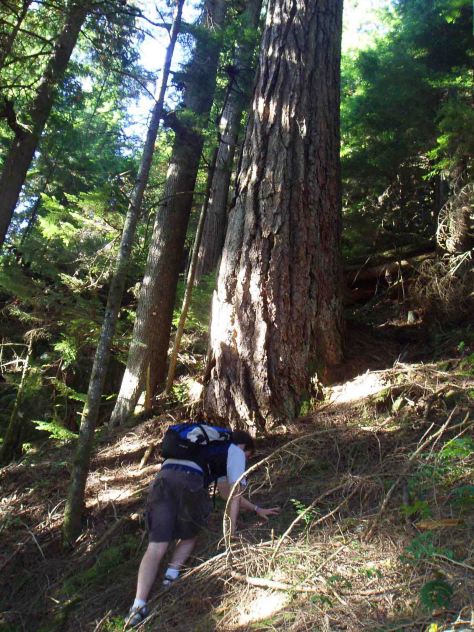
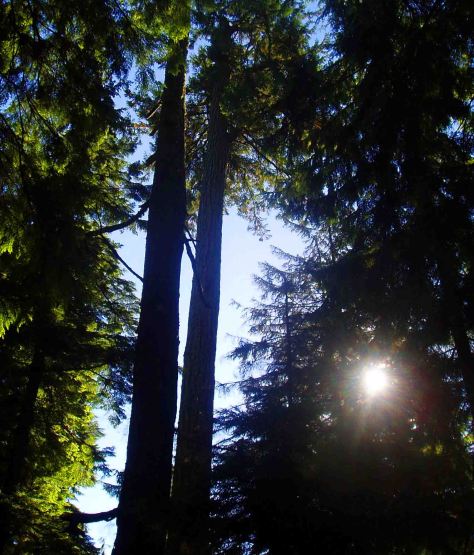
While you hike the Temples of Time Grove, it also helps to have a keen eye for the little things, like this tiny frog that we stumbled upon (below), and a wide variety of mosses and fungal growths.
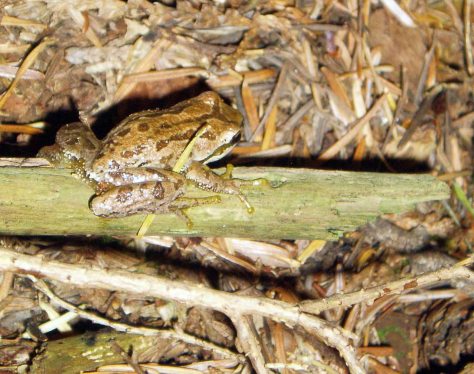
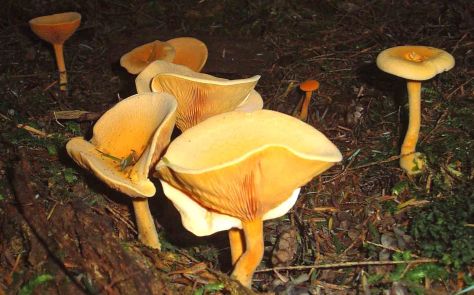

We soon found ourselves battling through thickets and deadfall as we worked our way toward a small creek bed (Krisby Creek on the WCWC map) that would lead us to even more ancient Douglas firs. Here we found the tree called the Rosebush Giant, sitting in an isolated clearing that readily gathers sunlight.
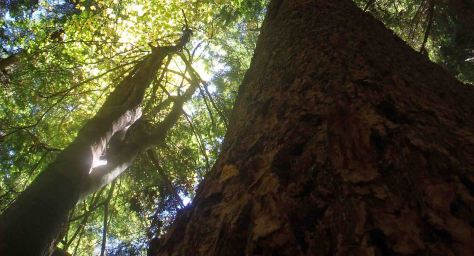
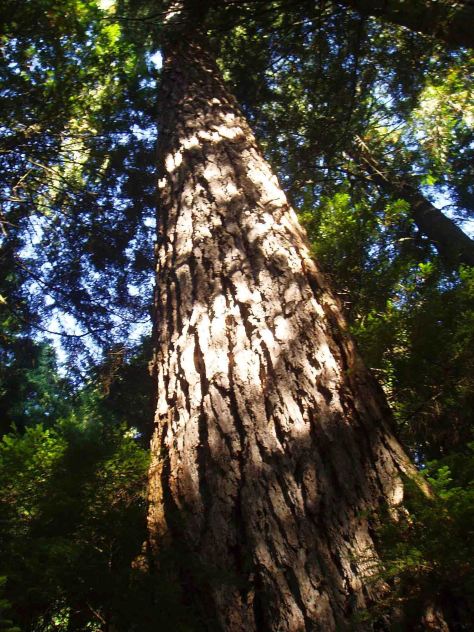
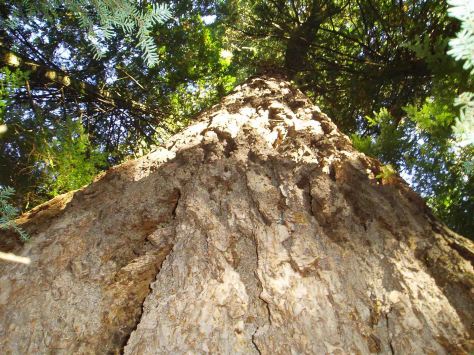
Not too far away you will find the Hundal Giant and the Chittenden Giant, two more beautiful firs with deeply channeled bark. A little known fact about the bark of these trees is that it may reach nearly a foot in thickness. With protection like that, such a tree is more protected from harsh winters and wildfires.
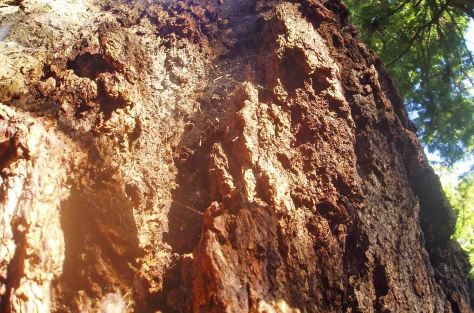
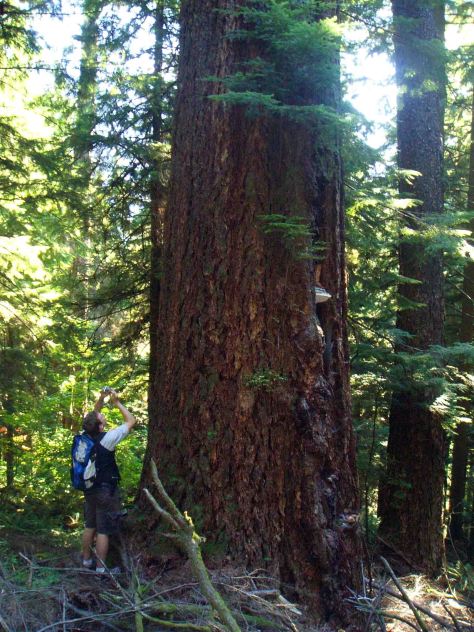
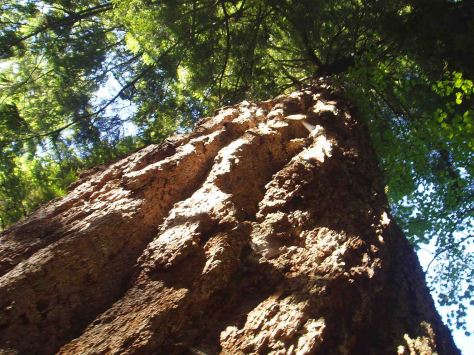
A little more persistence brought us to the monarch of this grove of trees, that aging leviathan known as the Temple Giant. It measures 3.05 metres(10 feet) in diameter rises over 85 metres(279 feet) from the forest floor.
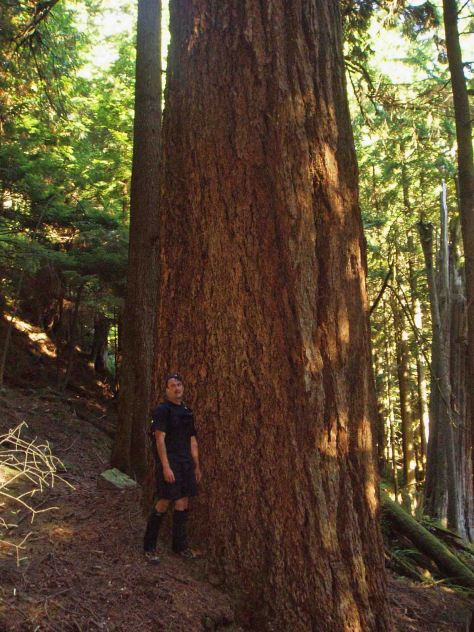

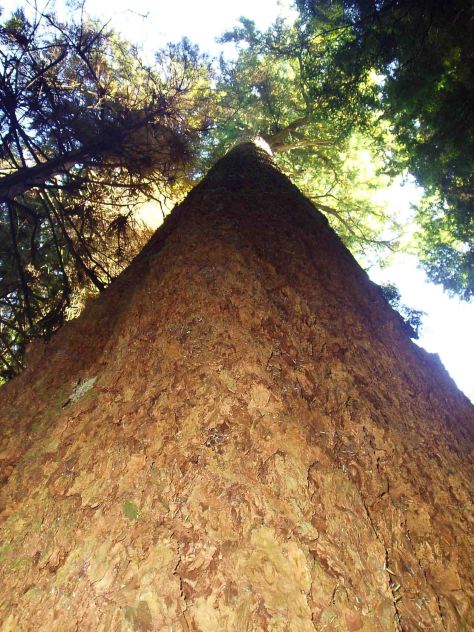
Within sight of this champion, and still wedged into the rock face just uphill, was the twisted bulk of the Tolkien Giant. It almost seemed to be watching us. I will describe our meeting with this veteran of five hundred winters, but for an important perspective, we need to travel forward in time, once more…
Two more revolutions of the earth around the sun! Now it is the spring of 2008, and as the remnants of a spring storm fade into mist, I find myself once again cycling the Seymour Valley Trailway. On this day, my companions are Rich, Daryl, and Chris, tree enthusiasts all. We opted to use the more southern trailhead to access the grove on that day. There were few sounds other than our occasional banter, as even the birds were in hiding from the morning rains. We made our way slowly to the Temple Giant, which still stood tall and proud.
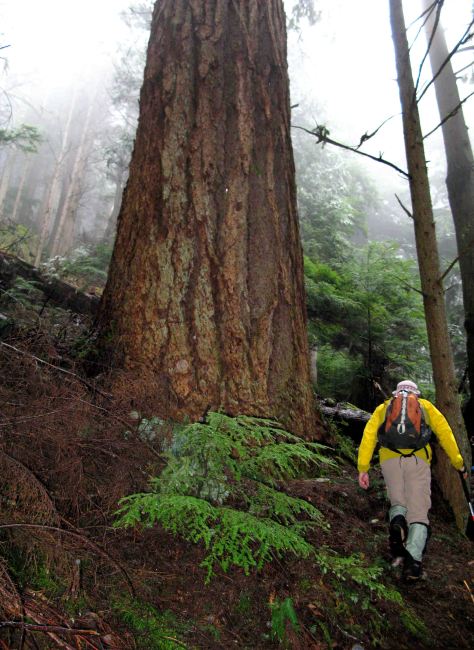
I stopped for a moment, watching Rich approach the tree. Turning to Chris, who, like me, had been to visit the Temple Giant numerous times, I mentioned that something didn’t seem quite the same. I didn’t remember the tree resting in a reasonably well lit forest clearing. Chris agreed, adding that the tree had always been difficult to photograph because of the shade.


The explanation for our momentary puzzlement became obvious all too soon. Lying in bizarre symmetry, the perfectly split trunk of a great cedar had come to rest on the hillside. As it fell, it had also taken out a number of younger trees, hence creating space in the forest canopy. I soon realized that the Tolkien Giant had met its untimely end.
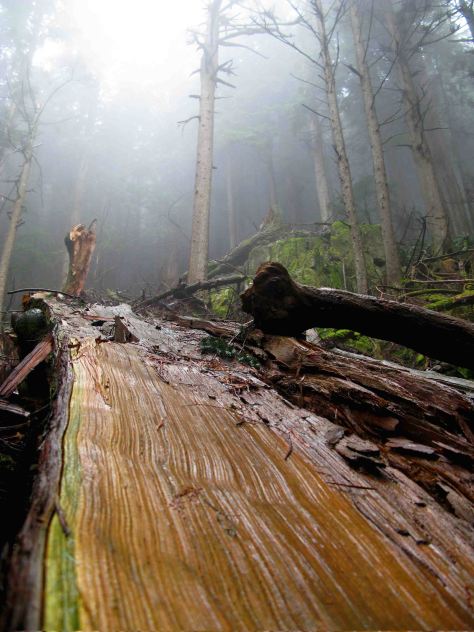
This was both unexpected and sad, and I paused interminably, thinking. Though I’d only known the tree for a fraction of its five centuries, I felt as though I’d lost an old friend, and found myself looking back to that bluebird day on which I had last seen it alive. Matt and I had marvelled at what an unlikely looking survivor it had been. Its location alone, anchored steadfastly around and into the grooves of a rock face, was a classic example of the way nature wastes no opportunity.
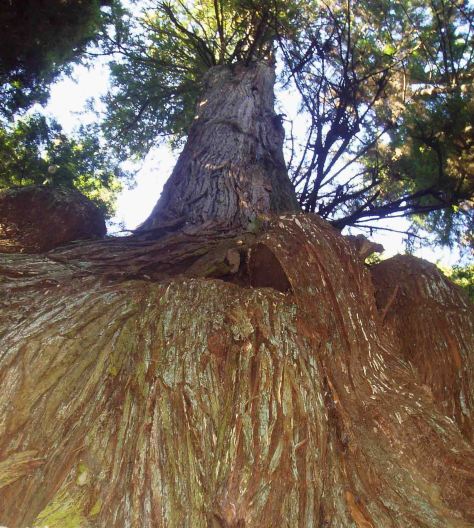
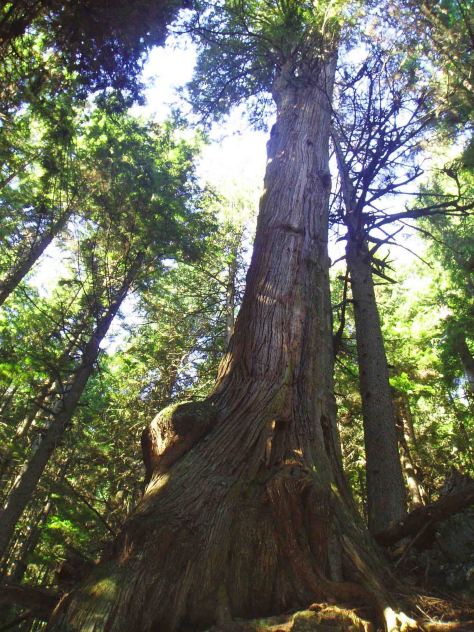
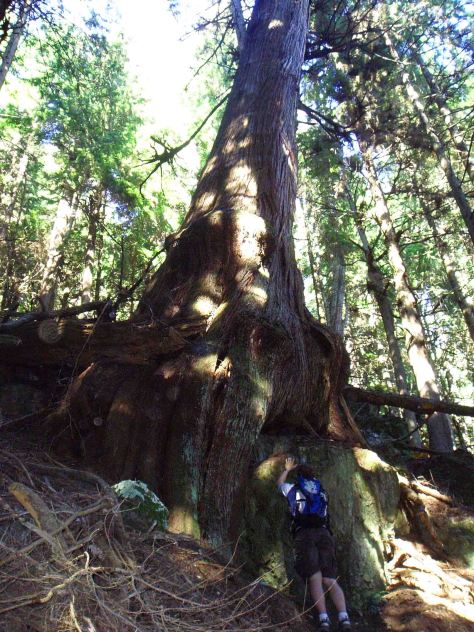
Much as I felt the loss, I understood that its passing had made way for other denizens of the forest, and my eye was drawn to some nearby cedars I had not noted in years past. Nature always provides, however mysterious its ways.
Our hike continued that day, as the mist cleared and the forest brightened. We visited most of the trees that Matt and I had seen two years before, and made several new discoveries as well! Even the most familiar walk can be a new experience, if you pay close attention.
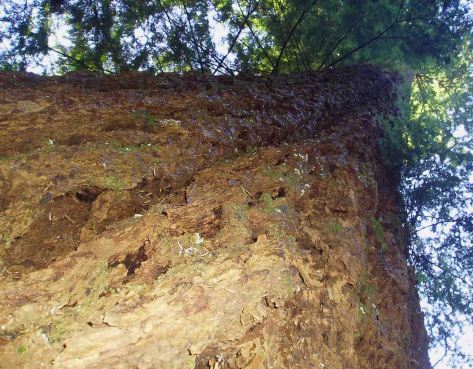
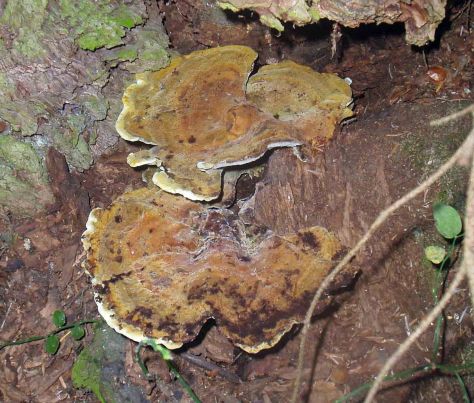

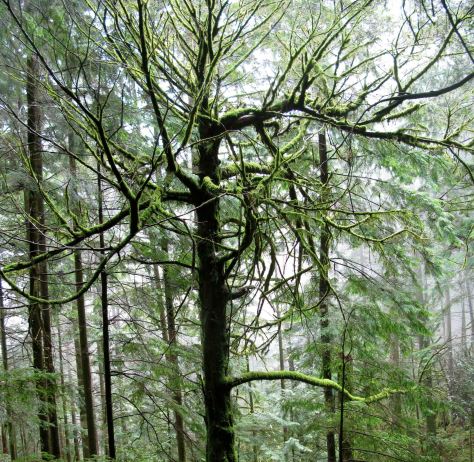
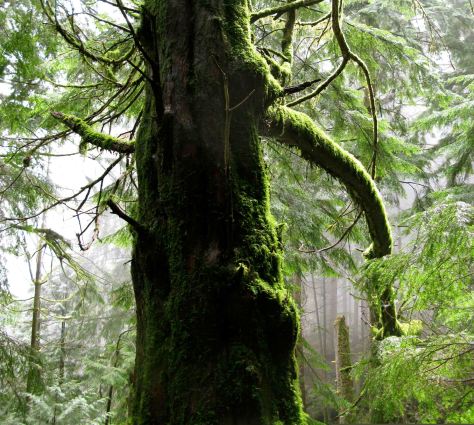


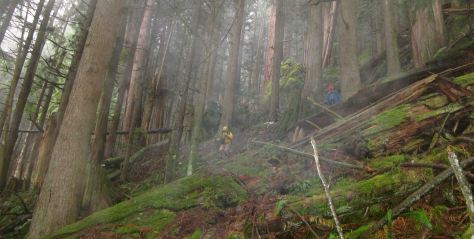


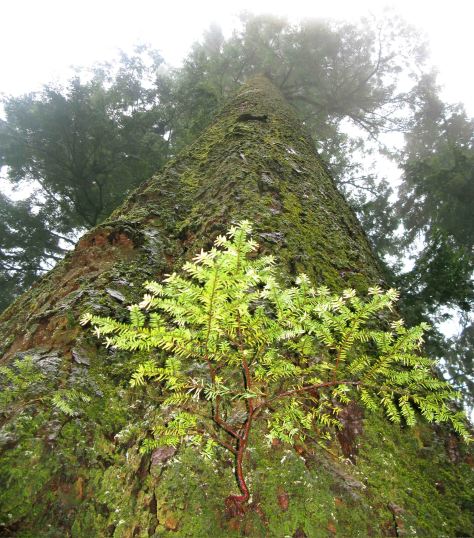

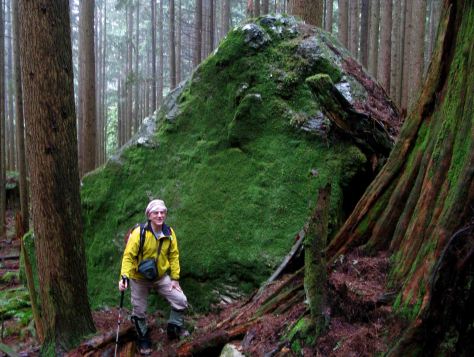

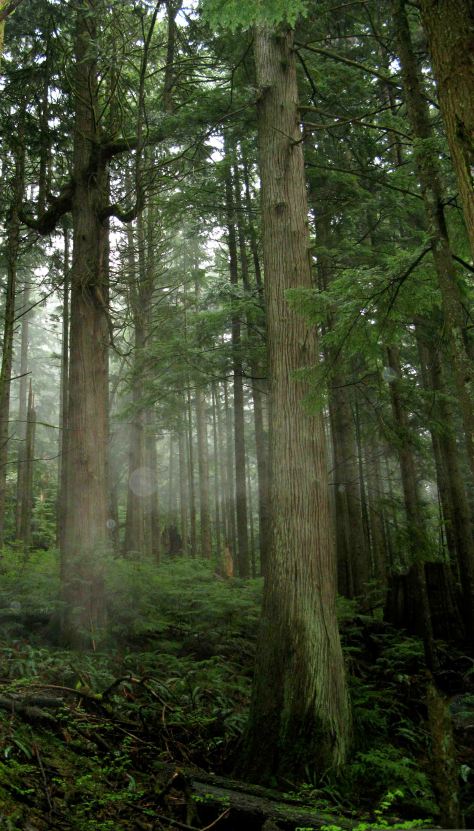
Though it was a shame to have lost one of the valley’s most spectacular trees, there was a most fitting way to end our day, a consolation of sorts. We made our way back toward the banks of Hydraulic Creek for a visit with the Hobbit Tree, another gnarled old cedar, well into its first millennium of life!

This tree, which can somehow be easy to miss, is close to 3.00 metres(9.84 feet) wide and simply exudes character. Rich was kind enough to pose with it for scale, just to give an idea of its immense size. I hope that it still lives on for at least a few more centuries!

There was little left to do but stop, eat lunch, and take a few photographs of the creek nearby before heading home that day. In the end, the Tolkien Giant, that resourceful little cedar that had begun its life five centuries ago, had been lost forever. Its towering companion, the Temple Fir, still survives today, fifteen years later. We must take on the role of guardians, and ensure that these forests survive for future generations to see. Paul George’s message still rings as true as ever: “Big Trees, Not Big Stumps.”


*******AUTHOR’S NOTE*******
It’s important to remind ourselves that while these trees are currently protected, that wasn’t always so. A mere twenty five years ago, after all, there was still logging in Greater Vancouver’s watersheds, and only through extreme diligence was that practice stopped. You can examine more about that history in this link. It’s rather a lengthy read, but a very worthwhile analysis. If it had been solely up to the GVWD, many local politicians, and the loggers who held Tree Farm License #42, the Temples of Time Grove would long ago have been lost. A tip of the hat to all of the people who fought so hard to save these forests!


Just found this great story! Very interesting to see photos of the Tolkien Giant alive. When visiting today, it is so pulverized (from falling) that it is difficult to tell its even there. Anyway, very nice story about the Seymour valley. Do you mind if I add a link to my hiking guide? http://www.vancouversbigtrees.com
LikeLike
Sure, no problem, Ira 🙂 Good to hear from you. Not sure you’d recall but I met you a number of years ago on one of Ralf Kelman’s UBC big trees trip
LikeLike
Hi, I just came across your blog while looking for more info on the Temples of Time Grove. I’ve been there a couple of times and noticed the last time that one of the trees–I believe it was the Paul George giant–had a lot of beads, gem stones, jewelry, and other “gifts” left at it. There was even a personal letter left in the bark. It’s as though people are leaving little offerings at the tree. Do you have any idea what the story is there, and why people are leaving things at that specific tree? It made me feel as though I should bring my own stone next time to leave there too.
LikeLiked by 1 person
I don’t know, Holly, it has been since May 2017 that I visited and there were none there at the time. Makes me wonder if Paul is still with us, I will have to check on that. Reminds me I should visit the grove again soon too!
LikeLike
That map published by the Western Canada Wilderness Committee (WCWC ) featuring multiple trails and old growth trees in the seymour demonstration, is it available (or similar version) online or in print? Looking to do some new routes this summer and have yet to find any detailed maps of the area. Any help would be appreciated!
Cheers,
John
LikeLiked by 1 person
Sadly it is long out of print, however you can access it at the Vancouver Public Library, John. I know someone who did and was able to get complete scans
LikeLike
Hi, I recall that you had listed the GPS points for the trees in the Temple in a comment field somewhere on your website… but I can’t seem to find it now. Would you mind sharing those points here? I’m heading out on an excursion up Hydraulic Creek with some friends tomorrow and would love to see these beauties.
Thanks,
Austin
LikeLiked by 1 person
Austin, I believe the info is listed in the comments of my story on The Temple Giant
LikeLike
What an incredible journey through time and nature! Your vivid storytelling brings the majesty and resilience of these ancient trees to life, while reminding us of the crucial balance between preservation and progress. It’s heartening to see the dedication of individuals like Ralf Kelman and groups like the WCWC in safeguarding these natural treasures. This post is not just a testament to the beauty of the North Shore Mountains, but also a powerful call to action for ongoing conservation efforts. Thanks for sharing this inspiring story and for championing the cause of these magnificent giants. 🌲✨
LikeLiked by 1 person
Glad you enjoyed the story! The post was definitely a means of paying it forward, and bringing to mind that these victories don’t come easily.
LikeLike